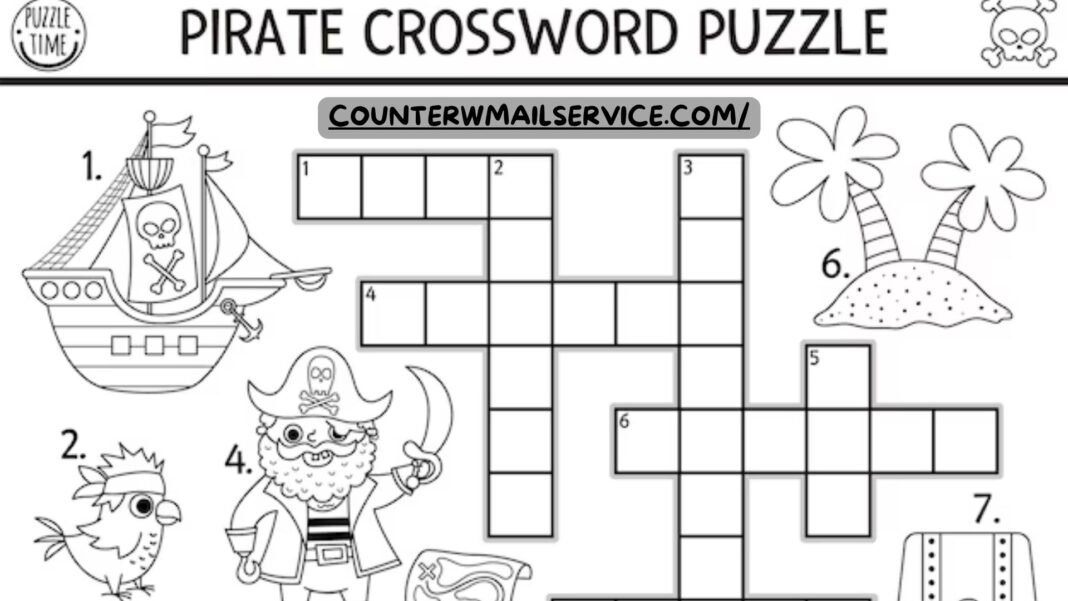Are you tired of scratching your head over tricky crossword clues? Look no further! In this blog post, we will explore how tuning fork features can help you decipher even the most tuning fork feature crossword. Get ready to sharpen your skills and become a crossword clue master!
Introduction to Crossword Puzzles and Clues
tuning fork feature crossword are a popular form of entertainment that has been enjoyed by people of all ages for decades. These word games consist of a grid of white and black squares, with clues given for words running horizontally and vertically throughout the grid. The goal is to fill in the white squares with letters to form words that fit both horizontally and vertically.
The clues provided in crossword puzzles can come in various forms, such as definitions, cryptic codes, puns, or even cultural references. They can range from simple to challenging, making solving the puzzle an engaging and rewarding experience.
One helpful tool for cracking these clues is the concept of “tuning fork features.” This refers to certain characteristics or elements within a clue that can guide solvers towards the correct answer. These features act as tuning forks, helping solvers find the right pitch and tune into the solution.
One common tuning fork feature is wordplay. Many tuning fork feature crossword use puns or other wordplay techniques to lead solvers towards a specific answer. For example, a clue like “A number found in every book” may seem straightforward at first glance but could actually be referring to the letter E (which appears in every “book”).
Another important aspect when deciphering crossword clues is understanding their structure. Clues often follow specific formats depending on their length or position within the puzzle grid. For instance, shorter answers tend to have more direct definitions while longer answers may require more complex thinking.
Cultural references are also commonly used as tuning fork features in tuning fork feature crossword. Solvers who are well-versed in pop culture or current events may have an advantage when it comes to recognizing these references and connecting them to possible answers.
Some other useful tuning fork features include homophones (words that sound alike), anagrams (words formed by rearranging letters), and double meanings (clues with two separate interpretations). Knowing how these different elements work within crossword puzzles can greatly improve one’s ability to solve them.
tuning fork feature crossword are not just a fun pastime but also an excellent exercise for the brain. By understanding the various tuning fork features used in clues, solvers can sharpen their wordplay skills and become more efficient at cracking even the most challenging puzzles. So next time you’re stumped by a tricky clue, remember to keep an eye out for these key elements and use them as your tuning forks towards solving the puzzle.
What are tuning fork feature crossword?
Tuning Fork Features refer to the common characteristics of crossword clues that help solvers narrow down and solve a particular clue. They act as subtle hints or indicators that guide solvers towards the correct answer. These features can be found in various types of crossword puzzles, including cryptic crosswords, American-style crosswords, and British-style crosswords.
One of the most important tuning fork features is wordplay. This involves using clever wordplay techniques such as anagrams, homophones, double meanings, and hidden words within the clue to lead solvers to the answer. For example, a clue like “Top dog (4)” may seem straightforward at first glance but upon closer inspection, it becomes clear that “top” could also mean “tip” which is an anagram for “pit”, making the answer “pup”.
Another common tuning fork feature crossword is indicator words. Indicator words are used to signal specific actions or manipulations that need to be done with the letters or words in the clue. These words can include terms like “in”, “around”, “inside”, and many more. For instance, a clue like “Insect inside soap (5)” would require solvers to place the word for an insect inside a five-letter word for soap – resulting in the answer being “cricket”.
Crossword setters also often use punctuation marks as tuning fork features. These can include hyphens, apostrophes, and quotation marks that indicate breaks or separations within a clue or between two different parts of a clue. For example, a clue like “‘I’ am not French! (3)” would indicate that only one letter from the word ‘French’ should be used in solving this three-letter answer.
Additionally, certain letter combinations can serve as tuning fork features in crossword clues. These include abbreviations for common phrases (“e.g.”, meaning ‘for example’) or words that are commonly found in crossword puzzles (such as ‘the’ and ‘and’). These letter combinations can help solvers identify the type of clue being used and give them a better understanding of the expected answer.
Tuning fork features are essential tools for solving crossword clues. They provide valuable hints and guidance to solvers, making the process of deciphering clues more manageable and enjoyable. By paying attention to these features, solvers can improve their skills and become more efficient at solving crossword puzzles.
Examples of Tuning Fork Features in Crossword Clues
Crossword puzzles are beloved by many for their challenging and clever clues that require a combination of knowledge, wordplay, and lateral thinking to solve. One helpful tool in deciphering these clues is the use of “tuning fork features.” These features are common patterns or tricks used by crossword constructors to guide solvers towards the correct answer.
One example of a tuning fork feature is the use of anagrams. Anagrams involve rearranging the letters of a word or phrase to form a new one. In crossword clues, anagrams are often indicated by words such as “shifting,” “changing,” or “switching.” For example, if the clue is “Playfully shifting positions (8),” the answer could be “teasing” which is an anagram of “seating.”
Another common tuning fork feature is the incorporation of abbreviations and acronyms. These can be found in both the clue and the answer itself. For instance, if a clue contains “US,” it could indicate that the answer has something to do with America. Additionally, constructors often use abbreviations for measurements like feet (ft.), inches (in.), or pounds (lbs.) to hint at numbers within the solution.
Homophones are also frequently utilized as tuning fork features in crossword clues. A homophone is a word that sounds like another but has a different meaning. An example would be using ‘write’ instead of ‘right’ in a clue such as “Correct on paper (5).” The solver would then need to consider synonyms for ‘correct’ before realizing that it was pointing towards ‘write,’ which sounds like ‘right.’
Some other common tuning fork features include puns, hidden words, double definitions, and charades. Puns involve playing with words that have multiple meanings or sound similar but have different spellings. Hidden words refer to answers hidden within longer phrases or sentences within either direction.
Double definitions are straightforward – the clue consists of two separate definitions that point towards the same answer. Charades are a type of wordplay where the solver needs to combine smaller words to form a longer one. For example, “Snail’s pace (3)” could be clued as “slow + escargot,” with the answer being “slo.”
Tuning fork features in crossword clues can be incredibly helpful in solving these puzzles. By recognizing and understanding these patterns and tricks, solvers can become more efficient and successful at completing even the most challenging crosswords. Next time you’re stuck on a clue, keep an eye out for tuning fork features – they might just lead you to the correct solution!
How to Identify and Utilize Tuning Fork Features in Solving Crosswords
Crossword puzzles are a great way to exercise your brain and improve your vocabulary, but they can also be quite challenging. Often, the clues provided in tuning fork feature crossword are vague or cryptic, making it difficult to decipher the answer. This is where tuning fork features come in handy.
Tuning fork features refer to specific elements within a clue that can help you break down the puzzle and arrive at the correct answer. These features may not always be present in every crossword clue, but when they do appear, they can significantly simplify the solving process.
So how do you identify and utilize tuning fork features? Here are some tips to help you out:
1. Pay attention to punctuation: Punctuation marks such as question marks, exclamation marks, and colons can serve as indicators of different types of clues. For example, a question mark at the end of a clue often signifies a definition-based clue which requires you to think outside the box for an answer.
2. Look for synonyms: One common tuning fork feature is using synonyms within a clue. For instance, if the clue reads “large feline,” it could be referring to either a lion or tiger. In this case, knowing synonyms for these words can help narrow down your options.
3. Consider wordplay: Some clues require you to think laterally or use wordplay techniques such as anagrams, homophones or hidden words. These clues often have indicators such as “mixed up” or “sounds like” that give away their wordplay nature.
4. Use cross-referencing: Another useful tuning fork feature is cross-referencing between different parts of the puzzle itself. If one clue seems related to another one’s answer based on topic or length, there’s a good chance they are connected somehow.
5.Break down compound clues: Sometimes crossword constructors combine multiple ideas into one clue called compound clues – these usually have two separate definitions that lead to the same solution. Identifying and breaking down these clues into their individual components can make them easier to solve.
Now that you know how to identify tuning fork features, it’s time to put them into practice. Solving crosswords takes practice and patience, so don’t get discouraged if you can’t solve a puzzle right away. Keep an eye out for tuning fork features in future puzzles, and with some practice, you’ll soon be deciphering crossword clues like a pro!
Tips and Tricks for Solving Crosswords with Tuning Fork Features
Crossword puzzles can be a fun and challenging way to exercise your brain and test your vocabulary. However, they can also be frustrating if you get stuck on a clue with no idea how to solve it. This is where the tuning fork features of crossword puzzles come in handy.
Tuning fork features refer to certain patterns or clues in crossword puzzles that can help you narrow down the possible answers. These tips and tricks are like tuning forks that guide you towards the correct solution by providing hints and clues. Here are some useful tips for using these features to solve crossword puzzles like a pro:
1. Pay attention to the length of the answer: One of the most basic tuning fork features is paying attention to the length of the answer required for a particular clue. Crossword grids typically have boxes with numbers denoting how many letters are needed for each answer, so make sure you count those carefully before attempting to fill them in.
2. Look out for repeated letters: Repeated letters in a clue often indicate that there are duplicate letters in the answer as well. For example, if a clue reads “Small insect (5)”, you would know that one of the five letters is repeated twice.
3. Use wordplay clues: Many crossword clues use wordplay techniques such as anagrams, charades, hidden words, or reversals to lead you towards the right answer. Be on the lookout for these types of clues and try different combinations until something clicks.
4. Check for common letter combinations: Certain letter combinations such as “th,” “ch,” or “sh” often appear together in words, making them ideal candidates when trying to fill in blanks between known letters.
5. Consider alternative meanings: Crossword puzzle creators often use words with multiple meanings as their clues, so don’t limit yourself to just one interpretation of a word.
6. Utilize context clues: Sometimes, clues may seem vague or confusing at first glance, but if you pay attention to the surrounding clues or theme of the puzzle, you may be able to find a connection and solve it.
7. Practice makes perfect: The more crossword puzzles you do, the more familiar you will become with common clue patterns and words used in these types of puzzles. So keep practicing to improve your skills!
Mastering tuning fork features can greatly improve your ability to solve crossword puzzles effectively. With practice and a little bit of creativity, you’ll soon be deciphering even the trickiest clues like a pro!
Common Pitfalls to Avoid When Using Tuning Fork Features
When it comes to using tuning fork features to decipher crossword clues, there are a few common pitfalls that many solvers fall into. These mistakes can lead to incorrect answers and frustration, so it’s important to be aware of them and avoid them as much as possible.
One common pitfall is relying too heavily on just one tuning fork feature. While these features can provide valuable clues for solving a crossword clue, they should not be the sole basis for an answer. It’s important to use multiple features and cross-reference them with other clues in order to ensure accuracy.
Another mistake is misinterpreting the meaning of a tuning fork feature. For example, some solvers may confuse “homophones” (words that sound alike but have different meanings) with “anagrams” (words formed by rearranging letters). This can lead to choosing an incorrect answer that sounds similar but does not actually fit the clue.
Similarly, it’s important not to assume that all words with similar spellings or sounds are synonyms. Tuning fork features may point towards words that have some similarities, but they may not necessarily be interchangeable in the context of a crossword clue.
It’s also easy to fall into the trap of overthinking a clue when using tuning fork features. Some solvers may try to come up with complex or obscure meanings for words based on these features, when in reality the solution may be much simpler. It’s important to approach each clue with an open mind and consider all possibilities before jumping to conclusions.
In addition, it’s crucial not to ignore any part of a tuning fork feature. Some solvers make the mistake of focusing only on certain letters or sounds within a feature and disregarding others that don’t seem relevant. However, every part of a feature is included for a reason and should be considered in finding the correct answer.
It’s essential not to get too caught up in one particular strategy or method when using tuning fork features. Every solver has their own unique approach and what works for one person may not work for another. It’s important to be adaptable and willing to try different methods in order to find what works best for you.
While tuning fork features can be incredibly helpful tools in solving crossword clues, it’s important to use them carefully and avoid these common pitfalls. By being aware of these potential mistakes and approaches, solvers can improve their accuracy and efficiency when using this technique.
Conclusion: Mastering the Art of Deciphering Crossword Cl
Mastering the art of deciphering tuning fork feature crosswords can be a challenging but rewarding task. By utilizing the tuning fork features discussed in this article, crossword enthusiasts can enhance their solving skills and tackle even the trickiest puzzles with confidence.
Firstly, understanding the various types of wordplay commonly used in crosswords is essential for successfully deciphering clues. This includes anagrams, double definitions, hidden words, and charades. The tuning fork feature helps recognize these wordplay techniques by providing a starting point for possible solutions.
Additionally, knowing how to interpret abbreviations and common phrases frequently used in crosswords is crucial. The tuning fork feature allows for quick recognition of these abbreviations and phrases by highlighting them as potential solutions based on the clue’s structure.
Another vital aspect is having a vast vocabulary and being familiar with different synonyms. With the help of the tuning fork feature’s synonym suggestions, solvers can broaden their knowledge base and explore alternative options when faced with challenging clues.
Furthermore, honing one’s ability to think outside the box is essential when tackling cryptic or deceptive crossword clues. The hint function provided by most crossword apps can serve as a helpful tool to nudge solvers in the right direction without giving away too much information.
Moreover, paying attention to punctuation marks within a clue can provide valuable insights into its answer. For example, question marks often indicate that the clue contains wordplay or requires creative thinking to solve it correctly.
Practicing regularly is key to mastering any skill – including deciphering crossword clues. Solving different types of puzzles regularly will not only improve your speed but also sharpen your puzzle-solving abilities over time.
Using tuning fork features such as recognizing different types of wordplay and abbreviations/phrases accurately interpreting punctuation marks while continuously expanding one’s vocabulary through practice are some ways to become proficient at solving crossword clues effectively. With patience and determination along with these tips and tricks at hand, any crossword enthusiast can confidently tackle even the most challenging of puzzles. So go ahead and put your skills to the test and become a master at deciphering crossword clues!


